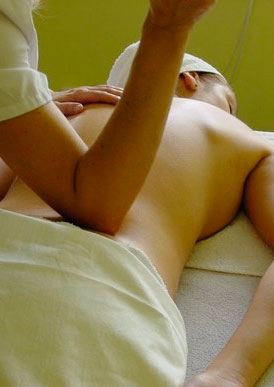Massage
|
Body SculpturingBody Sculpturing is a very precise form of medical massage treatment, developed by the Canadian Natural Health and Healing Centre. It is used in treating muscle, tendon, ligament. It is remarkably effective for skeletal structures that lie deep within the body and cannot be reached with the fingers in regular massage. It is done transversely on muscle fibers and has no relationship to relaxation massage. Body Sculpturing works by breaking down scar tissue and crystallization, restoring proper muscle balance. Body Sculpturing increases the blood circulation to injured areas that have decreased blood supply. It accomplishes this through controlled manual manipulation. Foot SculpturingThis technique has a similar effect on the feet as Reflexology but is much more powerful. Foot Sculpturing is the most powerful technique for correcting chronic muscle disorders, circulation problems and restoring the proper balance. This technique will make an impact on any disorder. All nerves and arteries end up in the feet. By doing this technique we wake up the whole body reflexively stimulating all the organs and body systems. Due to improper diet, lack of exercise and continual presence of gravity, crystallization may form in the feet, cutting off proper circulation reflexively, and slowing down the flow of blood and energy to any part of the body. These crystals are made of uric acid, which is a by-product from your metabolism, and lactic acid, a by-product from muscle contraction. Between the two they can cement your feet together. Also by breaking up the crystallization you help the feet return to a more natural shape and this in turn will affect the bone structure from head to toe, realigning and reshaping the body to create proper balance. The feet are the foundation of the body. Facial SculpturingTo understand how this procedure works, it’s important that you know something about the makeup of the skin. Your outer skin is made up of several layers, called epidermis. It’s the outer surface that becomes rough and wrinkled mainly due to the decreased circulation caused by lactic acid and uric acid crystallization in the deeper layers causing adhesions which cause a breaking down of muscle fibers. By using transverse manipulation on the origin and insertion of the deeper tendons and ligaments we can release the whole muscle bundle. The origin and insertion is where the tendon or ligament attaches onto the bone. The surface of the skin can only reflect the structures supporting it and creating it. In this advanced Body Work Therapy we penetrate the deep tissue layers of the face to restore natural tone and contour. In regular practices, this approach is never taken (light work is usually done). Dormant cells deep in your skin are also stimulated during this remarkable process. They become renewed and bring a new radiance to the skin’s outer surface. Your skin will look fresh, glowing and healthy. Facial Sculpturing helps against:
|
